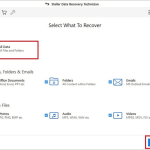Disaster Recovery Testing in App Development: What It Is and Why You Need It
It can take about 5 to 6 months to develop a large app. Unfortunately, all that work can be ruined in an instant. This may happen because of human error but can also occur due to cybersecurity threats and other serious problems. Most app developers use a disaster recovery plan to protect their investments.
However, even the best disaster recovery plan could have some gaps. That’s where disaster recovery testing comes into play. When done right, disaster recovery testing can inform you if your recovery plan isn’t meeting its recovery requirements. This enables you to make the necessary changes to make it reliable and effective.
This article will explore the importance of disaster recovery testing in app development. It also details some factors to consider before testing your disaster recovery plan.

What Is Disaster Recovery Testing?
Disaster recovery testing examines each step in your disaster recovery plan. Testing helps verify the plan’s effectiveness. It also ensures that your organization can restore data and applications to continue operations after a disruption. These may include an IT failure, cyber-attack, or natural disaster.
The testing process mimics real-life disruptive situations. This helps assess how well your application’s systems, processes, and operations can recover. When done properly, disaster recovery testing can help identify weaknesses and areas of improvement. It also informs your application development process, resilience, and compliance with regulatory requirements.
At its most basic, disaster recovery testing should begin with a baseline. This allows you to determine what normal looks like for your application development, deployment, and utilization. The assessment should locate all your critical assets. It should also create an inventory of IT resources. Moreover, it should identify mission-critical data and processes.
When testing your disaster recovery plan, your IT team will simulate disruptive scenarios. The team will evaluate if your infrastructure, systems, and personnel can respond and recover promptly. Ultimately, the testing process will enable you to create detailed documentation and recommendations. This will help improve your disaster recovery procedures.
What Is the Importance of Disaster Recovery Testing in App Development?
Contrary to what most people believe, disaster recovery testing doesn’t just apply to business. It also applies to individual, critical business operations. These include the app development process. A strong testing strategy can provide several benefits, including:
Ensures That the Plan Meets Your Needs
Different businesses and teams have different disaster recovery needs. For instance, health and finance are highly regulated and must adhere to specific compliance requirements. As such, any disaster recovery plan employed must meet these legal mandates.
Similarly, app developers cannot lose any data, especially those containing crucial data. Therefore, the testing plan is aimed at meeting these unique requirements. The test must verify the effectiveness of the disaster recovery plan.
Highlights Potential Weaknesses in the Plan
It’s nearly impossible to develop a reliable disaster recovery plan the first time. What’s even more concerning is that any flaw in the plan could result in your team losing access to all the data. This will prevent them from carrying on with their objectives.
Fortunately, by constantly testing your disaster recovery plan, you can identify and remove any vulnerabilities. You can do this before they cause actual damage. Disaster recovery testing also helps you find outdated tools, policies, and processes. This will allow you to make the necessary upgrades and updates.
Shortens Downtime After Actual Disasters
Disasters can instantly halt your operations. When this happens, you will experience a loss of revenue and damage your reputation. You may even face legal penalties. While you cannot always prevent a disaster, you can have measures in place to ensure the operations continue unabated.
A disaster recovery plan is a good place to start. It helps restore critical operations fast. However, an untested recovery plan could be more reliable. Untested plans may have potential weaknesses, which may make them ineffective.
However, by properly testing your recovery plan, you can ensure it is effective. This way, when disaster strikes, you can restore critical operations promptly.
Reduces Human Error
Human error is still one of the primary weak points in any disaster recovery plan. Even if you design your plan to the T, one mistake can unravel it.
For example, if a team member is unfamiliar with disaster recovery tools, they could lose crucial data. If they make a mistake when applying security measures, you may be unable to access your systems. Therefore, regular disaster recovery tests reduce the risk of human error. It also minimizes the risk of team members forgetting specific steps in the plan. You will notice this benefit even more during simulations. While testing the system, you can assess how well your team understands the process.
Factors to Consider Before Testing Your Disaster Recovery Plan
Testing a data recovery plan doesn’t only mean using the proper tools and methods. It includes several other factors that could impact the test results. The most important ones to consider when testing your data recovery plan include:
Number of People in the Disaster Recovery Team
An effective disaster recovery team should have at least two members to avoid problems related to a single point of failure. This way, if one member of the data recovery team is not available, you can call on a substitute. The substitute will have the necessary knowledge and skills to enact the plan.
Changes in Your Team or IT Infrastructure
Any changes in your team or IT infrastructure could make your disaster recovery plan outdated. Before testing your recovery plan, you must consider any changes, such as staff changes and new infrastructure components. This may even require a new disaster recovery plan.
Time of Day Chosen for Testing
Typically, disaster recovery testing is done outside work hours because it takes a long time to complete. However, the results of tests performed during these times may not accurately show how the plan would work under normal working conditions.
You should test your plan during normal working hours. Also, test it under isolation to get more accurate results. Doing it in isolation reduces the chances of a system overload.
Why You Need to Perform Disaster Recovery
You won’t know a disaster recovery plan’s effectiveness until you test it. Testing your disaster recovery plan could help you identify potential areas of weakness. It acts as a practice run for your team, enabling them to understand every stage of the plan fully.
Disaster recovery testing can help you resume your app development processes promptly. It will prevent a catastrophic system failure should an actual disaster happen.






